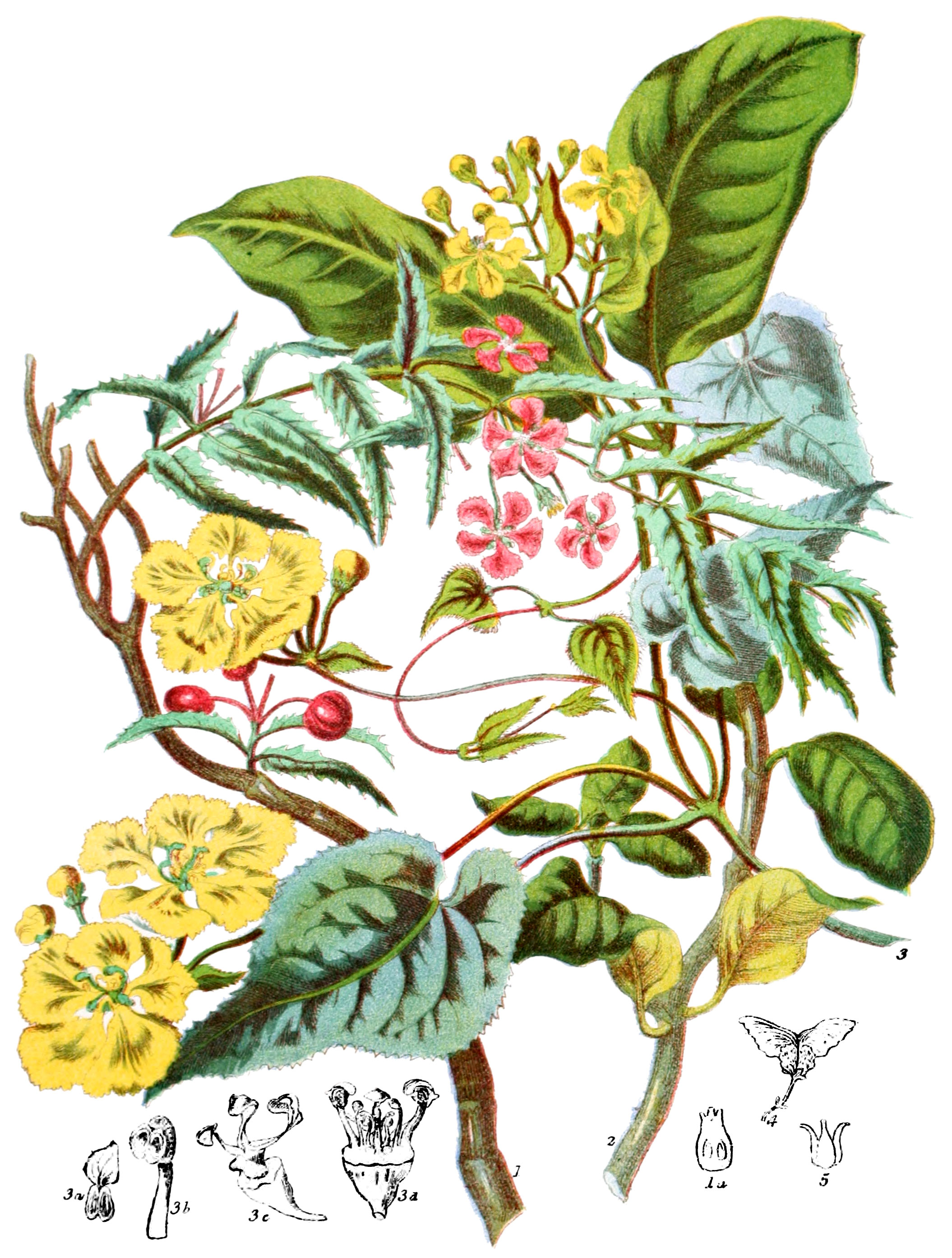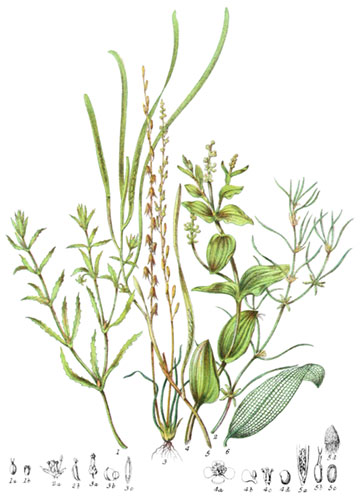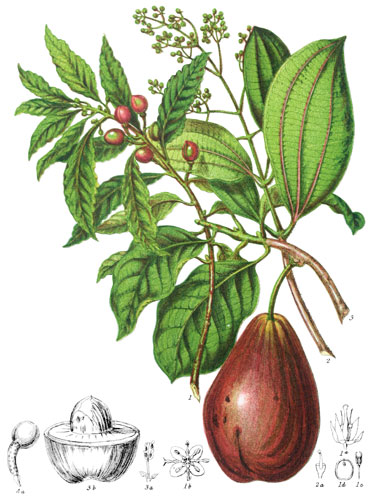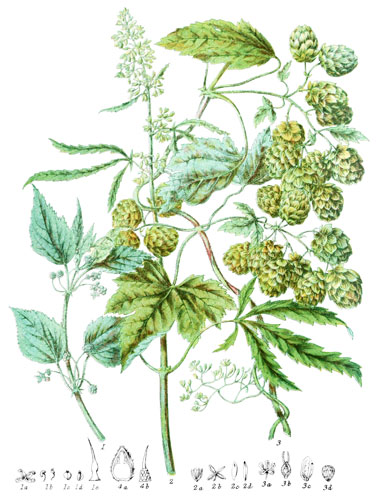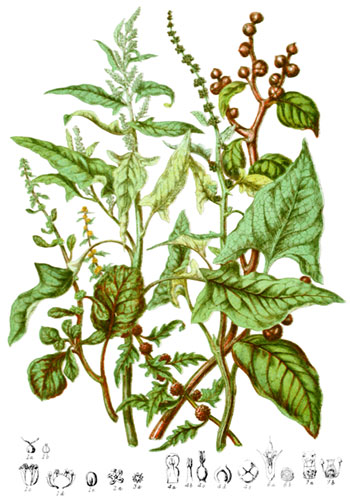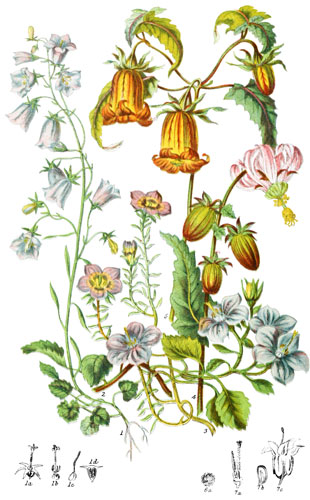Key characteristics
Trees and shrubs, some of which are of a climbing habit. The leaves are usually opposite or whorled, rarely alternate, simple, generally entire at the edges, sometimes having glands either on or underneath the leaf-stalk. The stipules are short, and soon fall off. The flowers vary, those of some species are complete, other have only stamens or pistils; they are most commonly yellow, rarely white, and very seldom blue, a few are red; in some scarce instances imperfect green flowers are intermingled with the perfect ones. The calyx is five-parted, with large glands at the base of one or all the sepals, very rarely without glands. The petals are five, clawed at the base, convolutely folded in the bud. The stamens are mostly double the number of the petals, often united at their base. The carpels are usually three, rarely two, very rarely four, either partly or entirely consolidated at the end, or cut off, or variously expanded. The fruit is either a drupe as in Malpighia, or a woody nut as in Hiptage, or winged as in Ryssopteris.
The most striking peculiarity of this Order is the presence of the large glands on the calyx, these are secreting organs filled with a kind of oil containing a fluid substance besides one that is concrete. Another remarkable circumstance is the tendency among the stems of the climbing species to acquire a very singular form of growth, by having the usual centre of pith and wood surrounded with irregularly-lobed and zoneless ribs, as may be distinctly seen in a section of the stem of Heteropterys anomæla.
Scarcely any uses are made of these plants, except in the countries where they are indigenous.
Select plants in this order
Not all plants listed are illustrated and not all plants illustrated are listed.
- Malpighia, an American genus, was named after Malpighi, a botanist and physician of Bologna, in the last century. Malpighia aquifolium (1)* bears a small fruit in South America; M. glabra and M. urens are cultivated in the West Indies for the sake of the fruit, which is eaten by the natives, and is called Barbadoes Cherry by Europeans, although much inferior to the real cherry. The leaves of M. urens are covered with sharp bristles which are painfully pungent; the under-surface of the leaves of M. aquifolium and other species are also beset with long slender bristles.
- Banisteria chrysophylla (2) has fine bright foliage of a peculiarly golden hue on the under side.
- Stigmaphyllum aristatum (3) is a beautiful climbing plant with curious flowers, the name explains the leafy nature of the stigmas which are three in number and in the form of a concave leaf; by a twist in the stalk of he stigmas they are brought immediately over the three perfect anthers. The folding of the petals in the bud is worthy of examination, so beautifully are they arranged; the two larger petals are neatly tucked under the points of the sepals: within lie the two side petals one over the other, the smallest petal lies innermost, the two lobes of its claw being inserted under the two nearest stigmas; the third stigma is between the two largest and outermost petals. At the base of the calyx are two oval glands on each sepal, except that which is between the two largest petals.
- The bark of Byrsonima is employed for tanning in Brazil, that of B. crassifolia yields an antidote to the bite of rattlesnakes; the wood of B. verbascifolia and others is of a bright red colour; the fruit of some species is eatable; Alcornoco bark is said to be the produce of B. laurifolia and others.
- The seed of Bunchosia armeniaca, a Peruvian tree, is supposed to be poisonous.
- Hiptage and Hirea are two climbing genera, scattered over every part of India, Hiptage Madablota extends into the valleys of the Himalaya as far north as the Deyra Doon, climbing over lofty trees, adorning them with its elegant fringed with white flowers, slightly tinged with pink and yellow.
- Hiptage obtusifolia is a native of China.
Locations
Almost all the plants of this Tribe belong to the Tropics; the chief portion is soon to be found in South America, nearly three hundred species are natives of Brazil; many grow in Mexico and the West Indiea, some in Africa and Madagascar, a few in India and Ceylon, the isles of the Indian Archipelago, China, and Polynesia. None belong to Europe.
Legend
- Malpighia ilicifolium, Holly-leaved Barbadoes Cherry. West Indies.
- Section of Ovary.
- Banisteria chrysophylla, Golden-leaved Banisteria. Brazil.
- Stigmaphyllum aristatum, Awned-leaved Stigmaphyllum. Brazil.
- Sepal and Glands, Magnified.
- Stamen, magnified.
- Pistils, magnified.
- Pistils and Stamens, magnified.
- Winged Seed-vessel of Ryssopteris timorensis.
- Carpels of Diplopteris paralias.
*Malpighia aquifolium was labeled as “Malpighia ilicifolium” in the original legend.
Explore more
Posters
Decorate your walls with colorful detailed posters based on Elizabeth Twining’s beautiful two-volume set from 1868.
Puzzles
Challenge yourself or someone else to assemble a puzzle of all 160 botanical illustrations.
